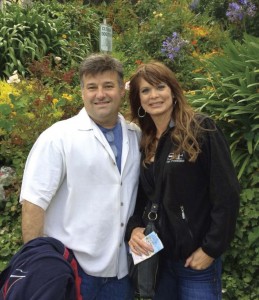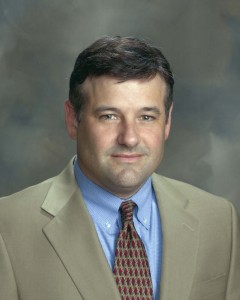Larry S. Richards is a man on a mission, and that mission is to capture vaporous hydrocarbons.
By Al Pickett, special contributor
Larry S. Richards said he believes the oil and gas industry, 20 years from now, will regret the amount of hydrocarbon molecules that it failed to capture.
“It took millions of years for nature to make those hydrocarbons,” he explained. “Companies spend millions of dollars to drill and complete wells, and the focus is on oil. If the associated gas—often thought of as nuisance gas—is vented or flared, it is gone forever. Natural gas is the cleanest burning energy source we have, and as an industry we need to ask ourselves how we can maximize the capture of every hydrocarbon molecule we bring to the surface.”
Richards, a member of the Permian Basin Petroleum Association (PBPA) board of directors, is president of Hy-Bon Engineering, a Midland-based company that bills itself as “experts in vent gas management.”
“Our core business is manufacturing vapor recovery units,” he stated.
In fact, it was the founder of Hy-Bon Engineering who actually coined the term “vapor recovery unit” when the technology was first developed in the Permian Basin in the early 1950s, according to Richards.
“There had been several H2S fatalities,” he said. “Hy-Bon developed the first “vapor recovery unit” to capture low pressure, sour gas from oil tanks.
From its start in the Permian Basin more than 60 years ago, Hy-Bon’s vapor recovery units can now be found all across the United States and in 35 counties. The company has 235 employees with service locations in Artesia, N.M., San Antonio, Weatherford, Lubbock and Carrizo Springs in Texas, Oklahoma City, Belpre and Bellaire in Ohio, and in Denver and Dickinson, N.D., in addition to its company headquarters and manufacturing facility in Midland. He noted that Hy-Bon just added five service men to its Permian operations in Midland, Lubbock, and Artesia.
Occidental Petroleum is a big customer of Hy-Bon’s, and Krish Ravishankar, Oxy’s HES )Health, Environment, and Safety) Manager, has liaisoned with Richards and thinks highly of him. Ravishankar said Richards came recommended to him through the EPA.
“He’s done an excellent job,” Ravishankar said. “He’s a fine professional and highly committed. Very reliable. He is very up-front in terms of evaluating what works best in a given situation.”
Richards, for his own part, said he grew up in the oil business.
“My dad worked for Getty Oil for 30+ years,” he related. “I mainly grew up in South Louisiana, but we moved quite a bit over the years—always somewhere there was a pump jack. I lived in Andrews and throughout Texas and Louisiana, and graduated from high school in Houston.”
Richards earned a business management degree from Texas A&M, spending two summers in college interning as a roustabout for Sun Oil Company in East Texas and South Texas. That’s where he met his wife of 25 years, Sondra, who is a professor at Midland College. The couple have two sons, Parker and Weston. After an initial job outside the oil and gas industry, he took a job with Continental EMSCO, helping the drilling rig manufacturer integrate into Mexico and South America.
He climbed the ladder with EMSCO, becoming vice president of operations, vice president of marketing and sales, and, eventually, chief operating officer of the company’s well servicing unit. When National Oilwell acquired EMSCO, Richards went to work for Key Energy Services as a vice president.
He was familiar with Hy-Bon, however, since the company had served as a subcontract manufacturer for EMSCO.
Richards joined Hy-Bon as president in 2003, and was promoted to CEO in 2008. Since then, the company has enjoyed remarkable growth, going from a company of $5 million in sales in 2002 to over $75 million this year. Hy-Bon was acquired by Regal Beloit Corporation in February of this year, bolstering its ability to grow over the next decade.
“We have focused on growing the company both for our clients and our employees,” he states, noting Hy-Bon didn’t lay anyone off during the downturn in 2009, a move that he says is paying dividends today with an experienced, loyal workforce. “I am proud of the team we have built. It is a team that is invested in the industry and the community.”
Hy-Bon’s focus is vent gas capture in low-pressure, high-BTU gas streams that previously may have been flared or vented.
“We design equipment to capture that vent gas,” he explained.
From the initial vapor recovery units, the company has evolved over the last five years, according to Richards, to embrace a broader, total solutions approach.

Larry with his wife Sondra. “We were in Napa this spring celebrating our 25th wedding anniversary. She’s my inspiration and a hell of a lady.”
“We offer a turnkey solution for emissions savings, starting with accurate emission surveys and ranging from installing and maintaining the equipment to providing vapor recovery towers and combustors to burn the gas in an environmentally friendly method if necessary,” he stated.
It also offers flow metering systems to help companies meet the data logging requirements of the new Environmental Protection Agency Quad O federal regulations and other state regulations. Of course, the advantage to capturing the vent gas is not only to prevent the release of potential greenhouse gases into the atmosphere but to also turn the vent gas into profit.
“Under the new EPA Quad O regulations, every tank battery has a limit of emission to a maximum of 6 tons VOCs [volatile organic compounds] per year for each tank,” he explained. “A little as 20 to 50 barrels of crude oil or five barrels of condensate can produce that amount of emissions.”
Many of the Wolfberry and Granite Wash wells in West Texas produce gas over 2,500 BTU, according Richards, who added that such gas can sell for $12 to $14 per thousand cubic feet, which he said is 2.5 times the NYMEX price—all because of its high BTU content.
“Clients are shocked how much money they can make by capturing the vent gas,” he declared. “All of the projects we do that have at least 10 tank battery sites, the economic payback is less than 24 months.”
Hy-Bon’s largest Permian project, according to Richards, was 130 tank batteries that it did for one company in the Permian Basin, all which he says are zero emission sites.
“We install and maintain the vapor recovery units, vapor recovery towers, and enclosed combustors,” he explained, “as well as help them to ensure compliance. We eliminate all emissions of the tank. It all started with getting real emission data with our survey teams, allowing for management decisions and planning based on facts”
Hy-Bon offers electric or engine drive vapor recovery units, full maintenance contracts, and emission surveys, including infrared leak detection, accurate measurement and VOC calculations, as well as Quad O pre-certified enclosed combustors and vapor recovery towers to eliminate oxygen problems.
Richards claims Hy-Bon is global leader in the application of vent gas recovery.
“We have groups from India, Argentina, Russia, and China come to Midland to train under our emission survey teams,” he added. “At a recent World Bank global conference, Chevron called our equipment in Angola one of the best emission recovery projects in the world. I am proud that the technology developed in the Permian Basin is being used in oil fields around the globe.”
Richards claimed that is no accident.
“We have so much entrepreneurial spirit in the Permian Basin that we can develop new technology quickly,” he stated. “That has value in other markets, especially overseas.”
Richards added that one will still see vent gas being flared in the Permian Basin because there isn’t always a pipeline available to receive the natural gas. But more and more, he said, companies see the advantage of recovering every hydrocarbon molecule and turning that “nuisance” gas into profit.
Al Pickett is a freelance writer in Abilene and author of four books. He also owns the West Central Texas Oil Activity Index, a daily and weekly oil and gas reporting service. For more information, email apickettc@sbcglobal.net.











